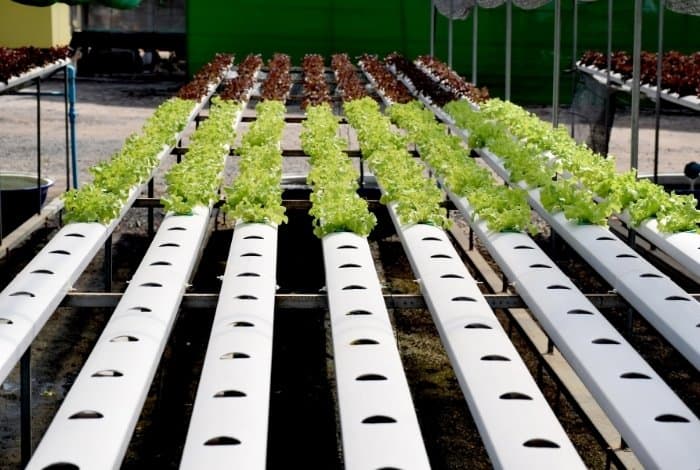Last Updated on February 21, 2023
Installing an efficient watering schedule for your hydroponic drip system is very vital for your plants. This is because if you get the idea wrong, it can be pretty detrimental to your plants. Therefore, we will be enlightening you on how to go set up an efficient drip watering schedule for your hydroponic.
A hydroponic drip system usually functions in the same manner a drip irrigation system with soil works. However, it works with a dissolved hydroponic nutrient. With the right knowledge, it is pretty easy to set up and establish an efficient drip system.
Types of Drip System: Two Types
The first thing you need to know is the different types of a drip system and now resolve to which to go for. We have two types of drip systems namely recirculating or recovery drip system and non-recirculating or non-recovery drip system.
-
Recirculating or Recovery Drip System
This type of drip system does not use much technology. In the recovery system, the dissolved nutrient solution from the drip system is recovered or recycled to be used again. This system seems like a nice and eco-friendly system because nutrients are been reused.
However, as the nutrient solutions are being recycled from the growing medium to the reservoir; the quantity of nutrients, as well as the pH range, is constantly changing. This will require constant monitoring and testing the solution and periodically replacing the solution to ensure everything is in check.
-
Non-recirculating or Non-recovery Drip System
As the non-recovery name implies, the nutrients solutions are not recovered. Allow them to drain away. Since nutrients are not been recycled, you are required to periodically replenish or refill the reservoir with fresh nutrient solution.
The non-recovery drip system can be timed and this timing must be very accurate. With an accurate cycle timer, it will ensure your plants are receiving the proper amount of nutrient-filled solution. Therefore, you have maximum control of the amount of nutrient solution your plant gets.
Hydroponic Drip System Watering Schedule
Setting up a drip watering schedule system is not so easy. It might even require you to do some trial and error. If you supply your plant with too much nutrient-filled water, they might eventually drown. Also, if you supply your plants with insufficient nutrient-filled water, they might end up being nutrient and water deficient.
You can begin by doing a trial by closely monitoring the hydroponic drip system for the first few days. This way, you can identify when the water level has reached the ideal stage.

You will have to set your hydroponic drip timer to 2 or 3 times daily depending on the period it takes to fill your growing medium without any waste.
You should note that the watering schedule will probably alternate as your plant continues to grow. This means plants that have grown will need more nutrient-filled solutions and the younger ones will need less.
Also, weather changes such as dryness during summer or an increase in humidity can require changes in the schedule of watering.
Setting Up a Hydroponic Drip System
There are various ready-made hydroponic kits. However, if you would like to build your hydroponic drip system, here are the materials needed:
- Drip emitters.
- Growing medium to support your plants (Rockwool, coconut coir, or expanded clay pellets).
- Growing containers.
- Nutrient solution reservoir.
- Timer for the pump.
- Submersible pump.
- Irrigation tubes or fittings.
- pH testers.
Find the Best Reverse Osmosis System for Hydroponics
To set up your hydroponic drip system, do the following:
- Begin with putting the pump right inside the reservoir and fix the drip pipe and tubes.
- Select a growing medium and fill it into your growing containers. Also, put your plants here and focus the drip emitters right into the roots of the plant.
- Set the containers a couple of inches above the reservoir so gravity can allow water to flow well. This way, excess water can quickly run off and recovered into the reservoir for the recovery system. Allow excess water to run off elsewhere for the non-recovery drip system.
- You can take control of the nutrient solution by connecting a timer to the power source which is in the electric pump.
- As you set your timer, the drip system will need to be closely monitored for the first couple of days in case some adjustments need to be made.
Final Say
Even though it may take some time for you to perfect the watering schedule of your hydroponic drip system, it’s definitely worth the trial. The hydroponic drip system is one of the most productive and low maintenance systems amid the 6 hydroponic systems.

Eunice is an enthusiastic gardener with a passion for growing beautiful flowers. She loves nothing more than spending time in her garden, tending to her plants and enjoying the outdoors. Eunice has been gardening for over 15 years and has developed a unique style of landscaping that is both practical and aesthetically pleasing. She is especially fond of growing roses and enjoys experimenting with different varieties and colors. Eunice takes great pride in her garden and often shares the fruits of her labor with friends and family. In her spare time, she enjoys reading gardening magazines and attending local horticulture events. Eunice is passionate about her hobby and is always eager to share her knowledge and experience with others.

